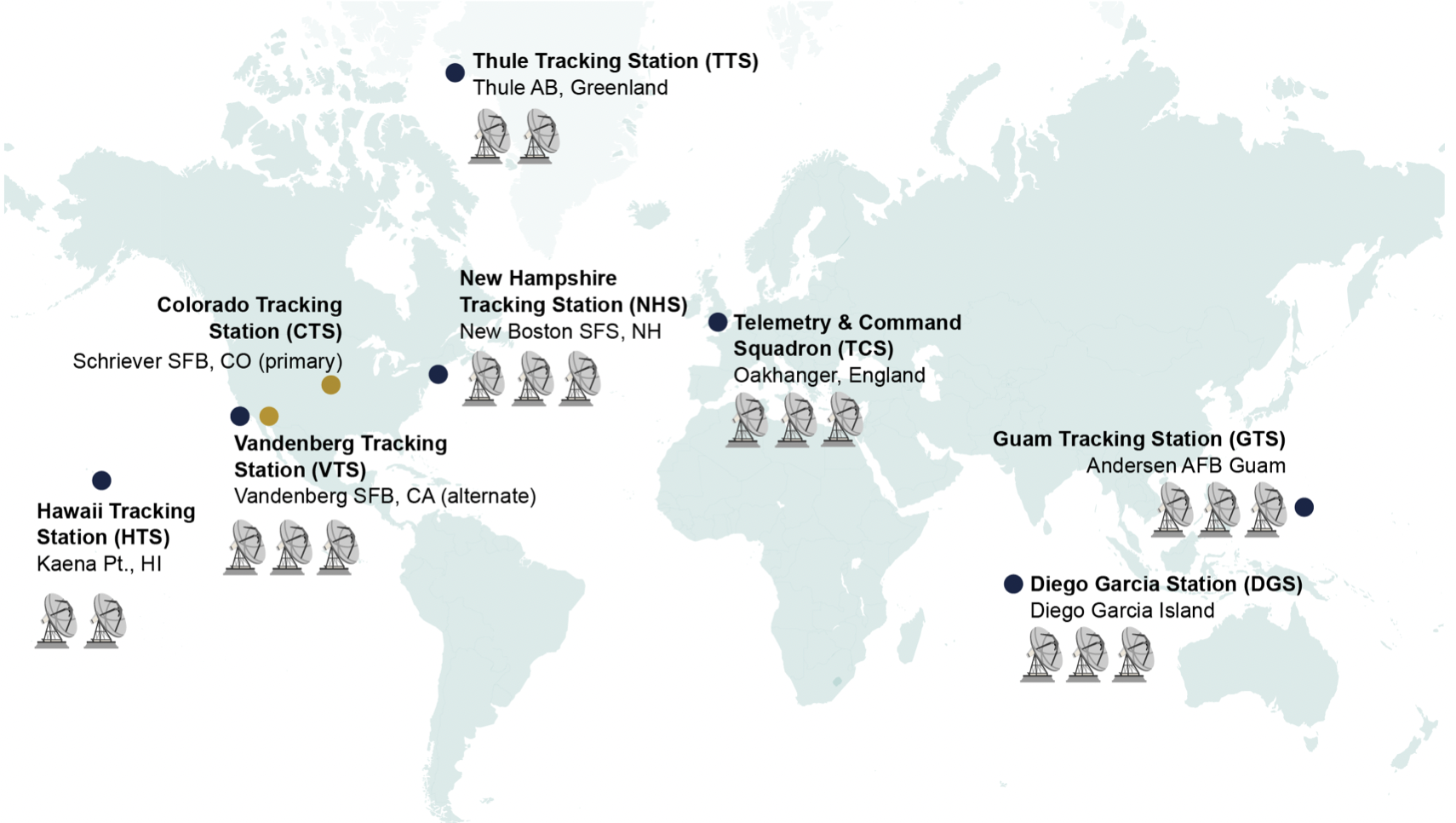WASHINGTON — The ground terminals used to operate U.S. military and intelligence satellites are running out of capacity and in dire need of upgrades, warns a new report from the Government Accountability Office.
GAO auditors spent more than a year investigating the state of the Satellite Control Network, operated by the U.S. Space Force. The network of 19 parabolic antennas, first established in 1959, is distributed across seven locations around the world.
The SCN is facing “obsolescence challenges and potential capacity gaps as DoD and other agencies launch more satellite systems that will rely on the network,” says GAO in the report released April 10.
Study directed by Congress
The study of the SCN was mandated by Congress in the 2021 National Defense Authorization Act. GAO wrote a similar report a decade ago warning about the need for a long-term sustainment plan for SCN.
There is a need for more capacity, the new report says, as annual SCN-supported satellite launches have tripled since 2012.
The SCN is primarily used to support launches and early operations for satellites, track and control satellites; and provide emergency support for tumbling or lost satellites.
To deal with the capacity crunch, the Space Force is looking at ways to augment the SCN with commercial capacity and with other government agencies’ antennas. The Space Force also plans to acquire 12 new, higher-capacity antennas, an effort known as Satellite Communication Augmentation Resource, or SCAR. The first prototype is expected in 2025.
Users trying to conserve capacity
In the meantime, the Space Force has requested SCN users to reduce non-critical contacts with satellites, GAO says. Officials told auditors that some SCN sites lack spare parts and face increasing costs to maintain aging systems.
The Space Force signed an agreement with the National Oceanic and Atmospheric Administration (NOAA) to use some of the agency’s excess capacity. According to GAO, the Space Force plans to upgrade and use five NOAA antennas to augment contacts for five satellite systems.
The Air Force in 2016 awarded Braxton Science and Technology Group a small business innovation research contract to figure out how to augment the military satellite control network with commercial antennas, a program called Commercial Augmentation Services (CAS). But currently no SCN supported satellites are using CAS due to cybersecurity issues, according to GAO.
The current CAS contract with Braxton, which is now part of Parsons Corp., ends in August 2023. The Space Force is planning a follow-on competitive contract that may include development work for commercial antennas.
Phased array antennas to increase capacity
The $1.4 billion SCAR program, meanwhile, will acquire phased-array antennas to significantly increase SCN capacity. Each antenna is designed to make contacts from 18 to 20 different satellites at the same time rather than one at a time as with current parabolic SCN antennas.
Space Force officials told GAO that maintaining and operating SCAR will be less expensive than the current configuration because the phased-array systems have no moving parts.
GAO says the estimated per-minute rate of the SCAR antennas will be $1.60, a sharp reduction from the current SCN cost of $8.75 per minute. By comparison, the NOAA antennas cost $16.50 per minute.
The Space Rapid Capabilities Office, an independent agency under the Space Force, last year awarded defense contractor BlueHalo an eight-year contract to supply and install the new antennas.
The first SCAR prototype is scheduled to be delivered by summer 2025. GAO says more antennas will be supplied between 2026 and 2030.
